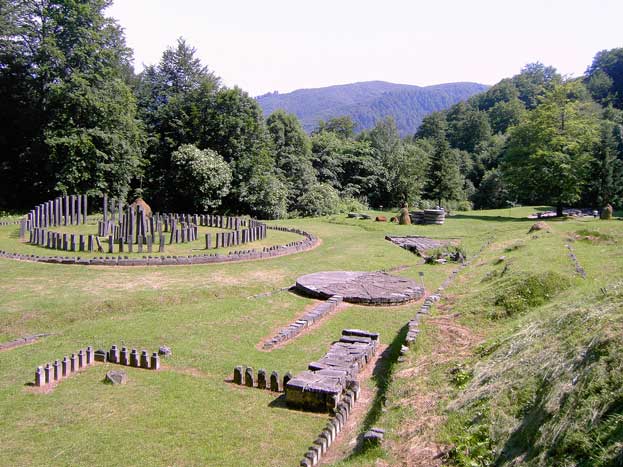The civilization of the Getes (Getae) and Dacians can be distinguished in the Thracian world long before Herodotus first referred to them in the 7th century BC. The Getes inhabited the Danube plain and the Dacians the central and western part of the region between the Carpathians and the Danube. Their close cultural and linguistic links are emphasized by several ancient authors. Theirs was a typical Iron Age culture, practising agriculture, stock-raising, fishing, and metal-working, as well as trade with the Greco-Roman world, shown by finds of luxury goods and coinage. When Greek colonies such as Histria, Tomis, Odessos, etc were established along the northern shores of the Black Sea in the 7th century BC, the Geto- Dacian rulers established close links with them and extended their protection. This cultural interchange had a profound effect on societies in the region. The other major cultural influence, adopted by the warrior aristocracy, came from the Scythians who inhabited the regions to the north and east.

Continent: Europe
Country: Romania
Category: Cultural
Criterion: (II)(III) (IV)
Date of Inscription: 1999
4th Century Expansion of Dacian Fortresses
During their expansion that began in the 4th century Celtic peoples settled in modern Transylvania and established hegemony over the region because of their superior weaponry. However, their influence waned from the mid-3rd century BC onwards. A new Geto-Dacian form of territorial organization appeared in the early 2nd century BC, at the same time as important technological developments (wheelmade pottery, iron ploughshares, use of stone for building). It was based on the dava, the central place of a tribal territory; these contained many sacred sites (temenoi) and other forms of cult centre.The process whereby the earlier fragmented tribal structure became centralized is not understood, but there is abundant evidence that the Geto-Dacian civilization flourished from the 1st century BC onwards, thanks to the intelligence and pragmatism of its rulers and of its priests. A Hellenistic form of kingdom was evolved by Burebişta (82-44 BC), supported by a warrior aristocracy and with its heart in the Orašţie Mountains around the sacred mountain Kogaionon where the sacred city was built, Sarmizegetusa Regia. It became master of the entire Black Sea coast, absorbing the Greek colonies.










Buy Youtube Channel
ReplyDeleteI have never thought that buying and selling YouTube channel could be a successful business. Do you know that YouTube channels are being sold in hundreds of dollars? It is one fine and very profitable business around the world.
Buy Youtube Comments
ReplyDeleteYouTube is the second highest ranking social media tool used by marketers to advertise their business. With 1.9 billion users logging in every month, brands have the perfect opportunity to showcase their products and services here.
Buy Youtube Subscribers
ReplyDeleteYoutube has become one great platform for advertising and marketing. No one has ever thought that these social media platforms, which are created for a fun purpose will serve the purpose of social media marketing as well.
Gmail Pva Accounts
ReplyDeleteGmail is one of the most used services across the world. It is nothing wrong with saying that it has provided a great platform to all the social marketers out there. Gone are the days when Gmail was only used to contact your loved one sitting in the other corner of the world.
Your post is really helpful to me and it can be more helpful with
ReplyDeletehttps://smmpoints.com/